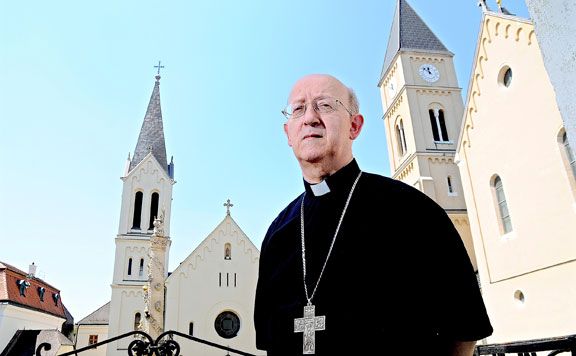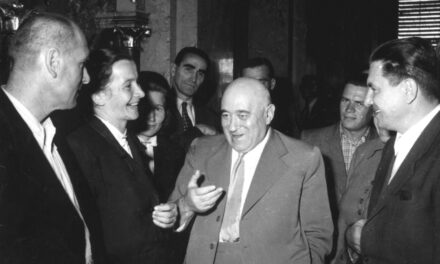Islam consistently rejects reincarnation, as does Christianity. There are opinions about what happens to a person before death, in death, and between death and resurrection, but there is no definite teaching.
According to Christian teaching, after death, God immediately judges our soul, which awaits the resurrection of the body either in heaven, in purgatory, or in hell. (In a parenthesis, I note that some of the people who returned from near death, mostly revived by doctors, experienced their entire life in seconds, or a significant part of it, along with its moral evaluation, and this makes it likely that in death our soul leaves time, and if it does not even benefit from eternity above time, nor can time-bound waiting be part of the class...)
In any case, the Last Day (the Day of Resurrection or Last Judgment) is as fundamental to the Islamic faith as it is to our faith. According to the words of Jesus, "in those days ... the sun will be darkened, the moon will not give light, the stars will fall from the sky, and the forces that hold everything together will be shaken" (Mk 13, 24-25). We read similar things in the Koran: "The sun is rolled up, ... the stars fall, ... the mountains are moved, ... the seas turn into a blazing flame" (K 81,1-6); “and in the day when the Trumpet shall be blown, he that is in the heavens and on the earth shall be afraid. ...And you see the mountains, which you thought were lifeless and motionless, move like clouds..." (Q 27,87-88).
The Last Day is not only the day of the transformation and re-creation of the world, but of the resurrection and judgment of the dead . According to Jesus, "the hour will come when all in the tombs will hear the voice of the Son of God and will come. Those who have done good will be raised to life, and those who have done evil will be raised to damnation" (Jn 5:28-29). The Koran calls this day the Day of Resurrection several times (23.16; 56.1), on which the judgment of the righteous and the unbelievers begins, at the end of which everyone will be put in their place. The good go to Heaven, the wicked go to Hell.
The Bible uses more images of the home of the saved than the Koran. Unfortunately, neither theology nor preaching deals with them. Let's put up of St. Thomas Aquinas , the so-called with "visiobeatifica", which we usually translate with blissful color vision. But the "blissful color vision" of the invisible and incomprehensible God means nothing to the common man. We say mass for the "salvation of the souls" of the deceased, and the motto of our retreats is "save your soul..." About the "heavenly feast" (Revelation 21:9-27), the "regained paradise" (Lk 23:43), the "new heaven and new earth" (2 Pt 3,13; Rev 21,1) we almost completely forget. St. Paul's first letter to the Corinthians that the resurrection of the body is a matter of life for believers: if there is a resurrection, then there is eternal life, if there is no resurrection, then there is no true eternal life (cf. 1 Cor. chapter 15). We still believe St. Thomas that the resurrection is only an additional element of eternal happiness...
In the Qur'an, we actually only come across images of paradise garden Everything that "stimulates the eyes and mouth" can be found in Paradise. Clean and abundant rivers, streams flowing with milk, wine and honey, gardens with the most desirable, always fresh and easily available fruits (dates, pomegranates, bananas), with women who love their husbands and match their age. But there is no shortage of "virgins with modest eyes, untouched by men or jinn", who are "like hyacinths and pearls", and the already mentioned big-eyed, "like hidden pearls". But so that righteous and saved women don't get bored: there are also eternally young boys there. (Cf. K 44,51-56; 47,15; 52,17-27; 55,46-77; 56,12-38; 88,8-16.)
In the listed surahs, in addition to tasty fruits, meat dishes and delicious (non-intoxicating) drinks are also mentioned. The joys of being with relatives (descendants) are also discussed.
As for hell, its description is not lacking in visual disturbances, but these are at least as terrifying as the images of Paradise are idyllic. The damned go to the fires of Hell, where they are thrown in chains; their food will be from a thorny and bitter bush to pus and boiling water and oil, and their bath will be hot water. In addition, they also get the hot wind called samún and the black smoke that stings their eyes. and of course they also have to live with the fact that no one comes to their defense, least of all the happy inhabitants of the paradise gardens. (Cf. K 23.103-104; 44.43-49; 47.15; 52.11-16; 55.41-44; 56.41-46; 69.25-37; 88.2-7.)
We can certainly see these as poetic images such as the "fire of Gehenna (= GeHinnom = Valley of Hinnom)", the "worms and the unquenchable fire" that Jesus also speaks of (Mt 5:22; Mk 9:48) or the " fiery lake of brimstone" (Revelation 20:9). - But we can also put "being thrown into the outer darkness" and "remaining in the outer darkness" in this line (cf. Mt 22:13; 25:1-12).
These poetic images - even if we don't have to take them literally - express the bitterness of damnation, exclusion from the light and all good things, and are suitable for dissuading weak-willed and frivolous people from committing certain sins and encouraging them to live a virtuous life.
Finally, it should be mentioned that the Qur'an and the Sunnah speak of 7 heavens and 7 hells, as degrees of happiness in the other world and suffering in hell. The messengers (prophets) and the martyrs go to the seventh heaven (the highest garden of Paradise), and those who were only outwardly Muslim, or even became traitors to Islam, go to the bottom of hell. The Qur'an calls them "hypocrites" (cf. K 4,140,145).
Gyula Márfi












